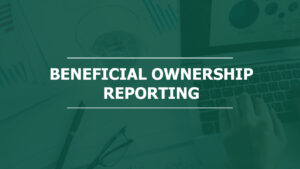You may be hearing more about ETFs in the media as their popularity has grown tremendously in recent years. In fact, ETFs accumulated record net flows of $900 billion in 2021, pushing the entire US ETF market valuation to over $7.3 Trillion at the end of 2021¹. With this significant growth, many investors are seeking to learn more about ETFs and whether they may be beneficial investments for their own portfolios.
What Exactly Is an ETF?
An exchange-traded fund or ETF is similar to a conventional mutual fund in that it’s an investment vehicle that offers a portfolio or combination of underlying securities such as stocks or bonds. This instant diversification is attractive as it eliminates the need to purchase hundreds of individual securities to build a similarly diversified portfolio.
ETFs originally were built to passively track an index such as the S&P 500 Index. With the products’ significant growth, investment firms are increasingly offering more “active” style funds that offer exposure to more specific baskets of securities or even a basket of underlying ETFs. With over 8,000 different ETFs available in the global markets, investors can likely find an ETF that focuses on almost any asset class or sector, whether for asset allocation long-term investment purposes or for short-term market-timed investment strategies.
The Mechanics of an ETF
As its name suggests, ETFs are traded on an exchange, similar to how stocks trade. This feature offers the investor the ability to buy or sell throughout the day to take advantage of market opportunities vs. waiting until the end of the day as with mutual funds.
ETFs are generally considered more tax-efficient than mutual funds due to their unique structure that results in fewer capital gains distributions than mutual funds. In addition, their more passive style typically results in lower turnover, also helping to minimize capital gains.
It’s important for investors to keep in mind that ETF generalizations around lower fees and potential tax efficiencies may not be true for every ETF so it’s still crucial for the investor to fully research and understand the product before purchasing.
Investing in ETFs
Any investor with a brokerage or advisory account can invest in ETFs. Just like other securities, you can choose to research and select ETFs on your own or with the help of a trusted financial professional.
Grinnell Wealth Management often utilizes ETFs in its client portfolio construction and our advisors and financial professionals would welcome the opportunity to further discuss ETFs and how we can help you craft a portfolio of ETFs to meet your unique financial goals.
Summary
ETFs offer a cost-effective and efficient way to diversify your investment portfolio. Whether it’s for potential tax benefits, generally lower fees, or ease of use, exchange-traded funds come with a wide range of benefits and are often becoming the preferred investment choice over conventional mutual funds.
[1] Source: Morningstar, Inc., as of December 31, 2021. Mutual fund data exclude money market funds and funds-of-funds. Mutual fund and ETF data include only U.S.-domiciled products based in U.S. dollars.
Disclosures:
Security services are offered through Cambridge Investment Research, Inc., a registered broker-dealer. Advisory services are offered through Cambridge Investment Research Advisors, a Registered Investment Advisor. Grinnell State Bank d/b/a Grinnell Investor Center d/b/a Grinnell Wealth Management and Cambridge are not affiliated.
The information provided above is not meant to constitute an investment recommendation for, or advice to, any specific person. Non-deposit investment products are not FDIC insured, not bank guaranteed, and may lose value.






